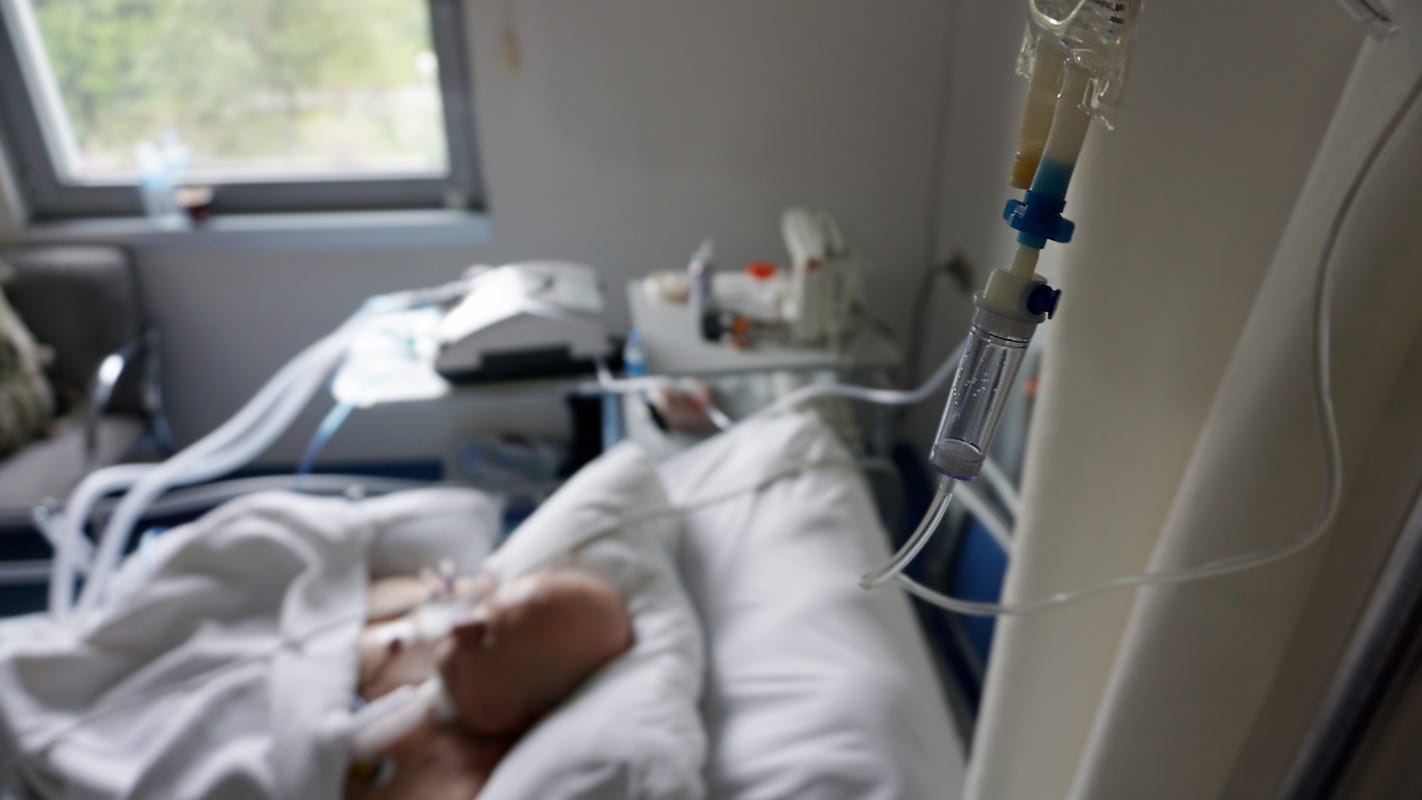Adrianna Rodriguez, USA TODAY
Published 6:11 a.m. ET March 19, 2020 | Updated 7:09 a.m. ET March 19, 2020
CLOSE![]()
An epidemiologist answers the biggest questions she’s getting about coronavirus.
Wochit
Acute respiratory distress syndrome, also known as ARDS, is a common killer among critically ill patients hospitalized with COVID-19.
But even if they survive, it’s a long road to recovery.
Patients develop ARDS in the late stages of the infection when the virus has caused significant damage to the lungs. In the process of trying to fight off the virus, the body sends immune cells to the lungs causing an inflammatory reaction.
The reaction can cause small blood vessels in the lung to leak fluid and fill up the alveoli, which are tiny air sacs in the lung that process oxygen, according to the American Lung Association. That makes it difficult for the oxygen to enter the bloodstream and arrive to the body’s organs.
At that point, critical patients are put on a ventilator to help the circulation of oxygen, but in some cases it’s not enough for the body to function and the patient dies.
In other cases, even if patients are taken off the ventilator, there’s still a 30% chance that they’ll die in 30 days, according to a comprehensive study on ARDS called the Lung Safe study.
What does the coronavirus do to your body? Everything to know about the infection process
Dr. Nuala Meyer, associate professor at the University of Pennsylvania Perelman School of Medicine, says preliminary reports from China and South Korea indicate that COVID-19 patients who develop ARDS are taken off the ventilator after 10 to 14 days.
She added that patients who survive ARDS face a long process to recover from both physical and cognitive impairments.
“Patients tend to lose peripheral muscle mass and muscle function,” she said. At five years after hospital discharge, ARDS survivors fall significantly short compared to peers in their ability to walk and how far.
They also have trouble swallowing and speaking because of trauma caused by the breathing tube that intrude on the vocal cords.
A 2016 study published in Intensive Care Medicine found patients sustained cognitive impairment up to five years after leaving the hospital. Cognitive impairment for survivors ranged from 70% to 100% after hospital discharge, 80% one year after and up to 20% five years after.
Dow, S&P 500 keep falling: So how will we know when the stock market drop is over?
Red Cross urges public to donate: The US faces ‘severe blood shortage’ as coronavirus outbreak cancels blood drives and regular donations
Along with cognitive impairment, the study also found patients and their caregivers were more likely to experience psychiatric disorders such as depression, anxiety and post-traumatic stress disorder.
“The depression takes a very physical form,” said Meyer. “Being sad at the loss of what you were able to do.”
Although many aspects of the body seem to take more time to recover, studies show the lungs are near-normal at five years after hospital discharge.
Experts say that many patients hospitalized for severe and critical COVID-19 develop ARDS. In a JAMA study published last week, 84 patients out of 201 developed ARDS and out of those 84 patients, 44 died.
CLOSE![]()
The CDC and a new study look at how long the coronavirus can live on surfaces.
USA TODAY
Researchers in the study concluded that older age was associated with a greater risk of developing ARDS and dying. They also found that patients with ARDS were able to recover when they had a higher fever, a sign the body is fighting off the infection.
Critically ill patients can develop ARDS quicker than one might think. According to a January study published in peer-reviewed Lancet Journals, ARDS developed in 17-29% of hospitalized COVID-19 patients and the median time from symptoms onset to ARDS was eight days.
However, Dr. Abhijit Duggal, a critical care specialist at the Cleveland Clinic, says the preliminary trends that experts are seeing with COVID-19 are very similar to other pandemics of the past.
“If you look at H1N1 swine flu pandemic, we saw very similar numbers where people who developed severe critical illness, requiring mechanical ventilation, developed ARDS,” he said. “Just like any other viral illness.”
He also says that about 80% of COVID-19 patients recover with no complications.
Follow Adrianna Rodriguez on Twitter: @AdriannaUSAT.
Autoplay
Show Thumbnails
Show Captions
Read or Share this story: https://www.usatoday.com/story/news/health/2020/03/19/coronavirus-what-acute-respiratory-distress-syndrome-ards/5066412002/











